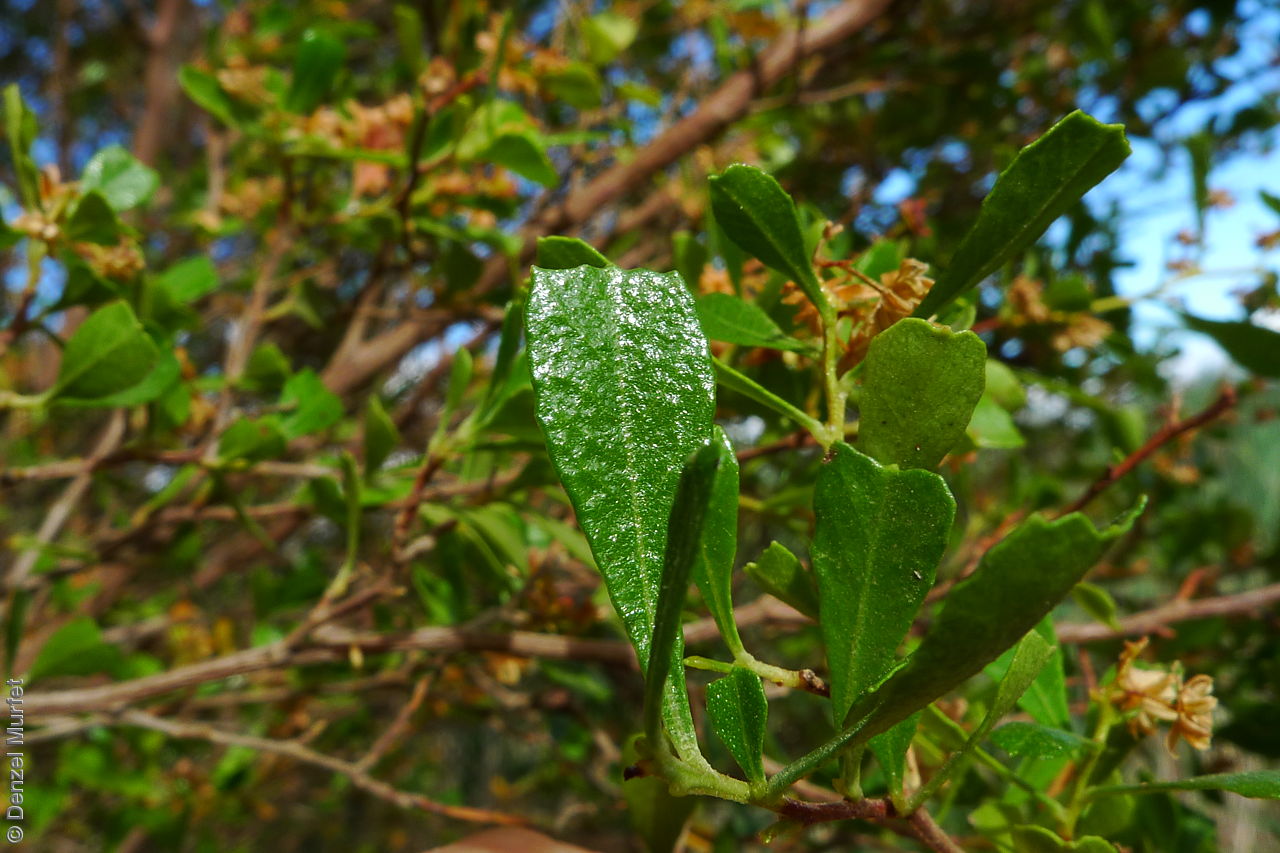
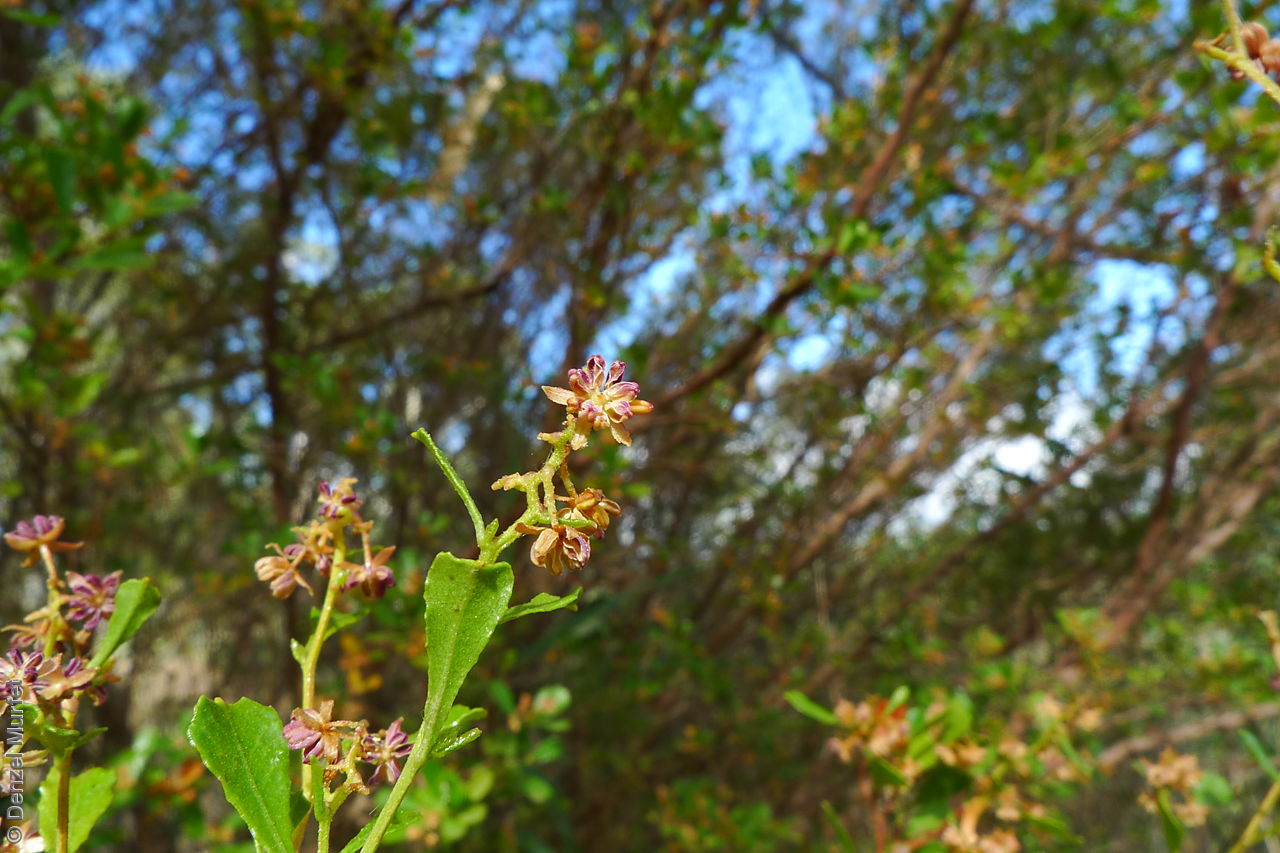
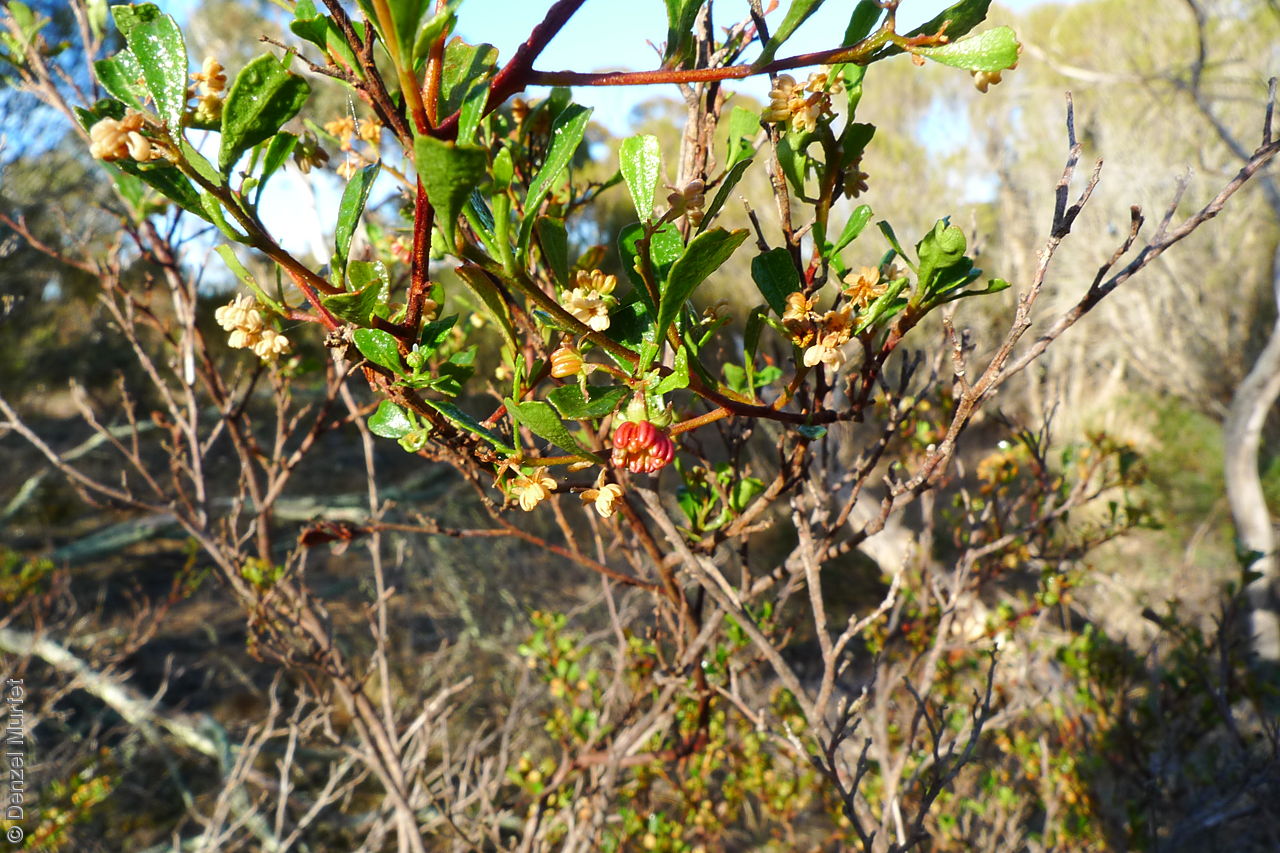
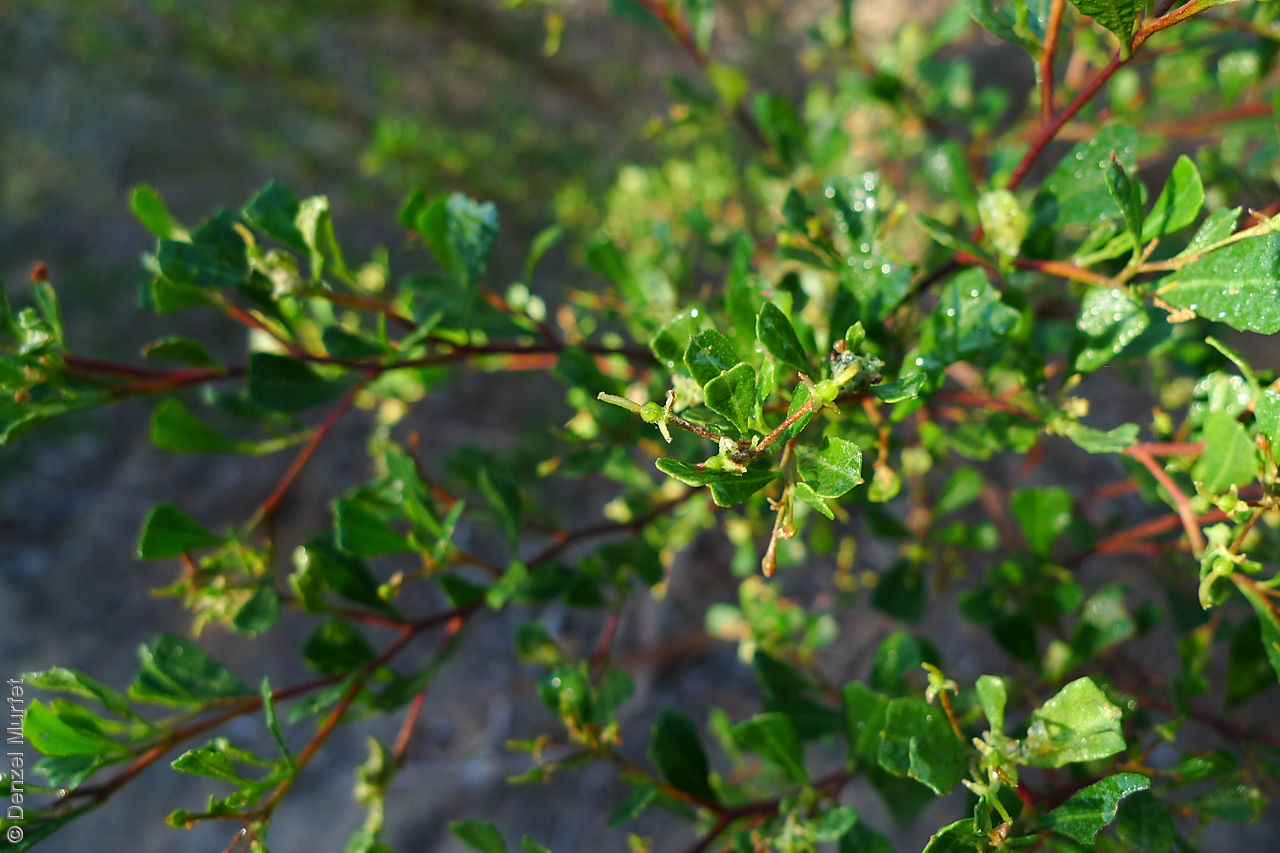
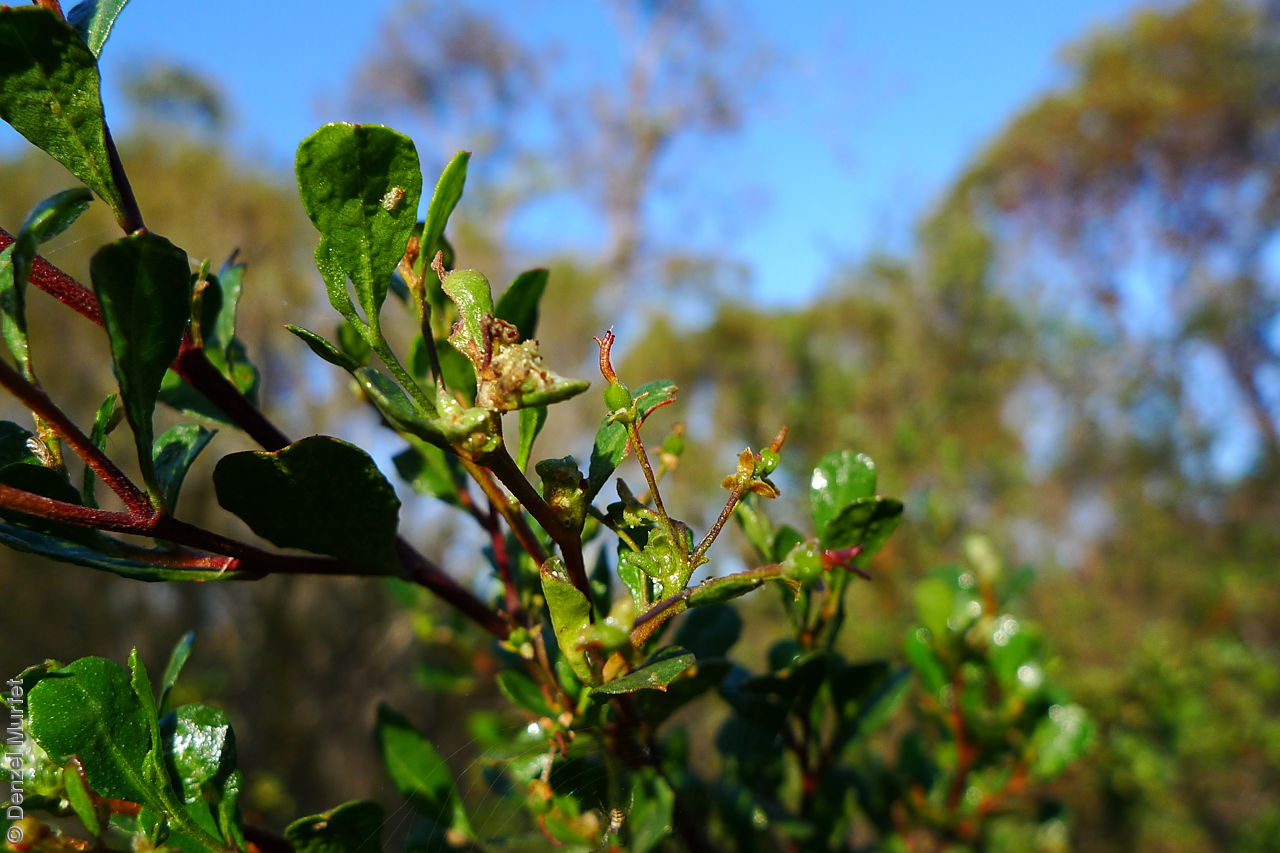
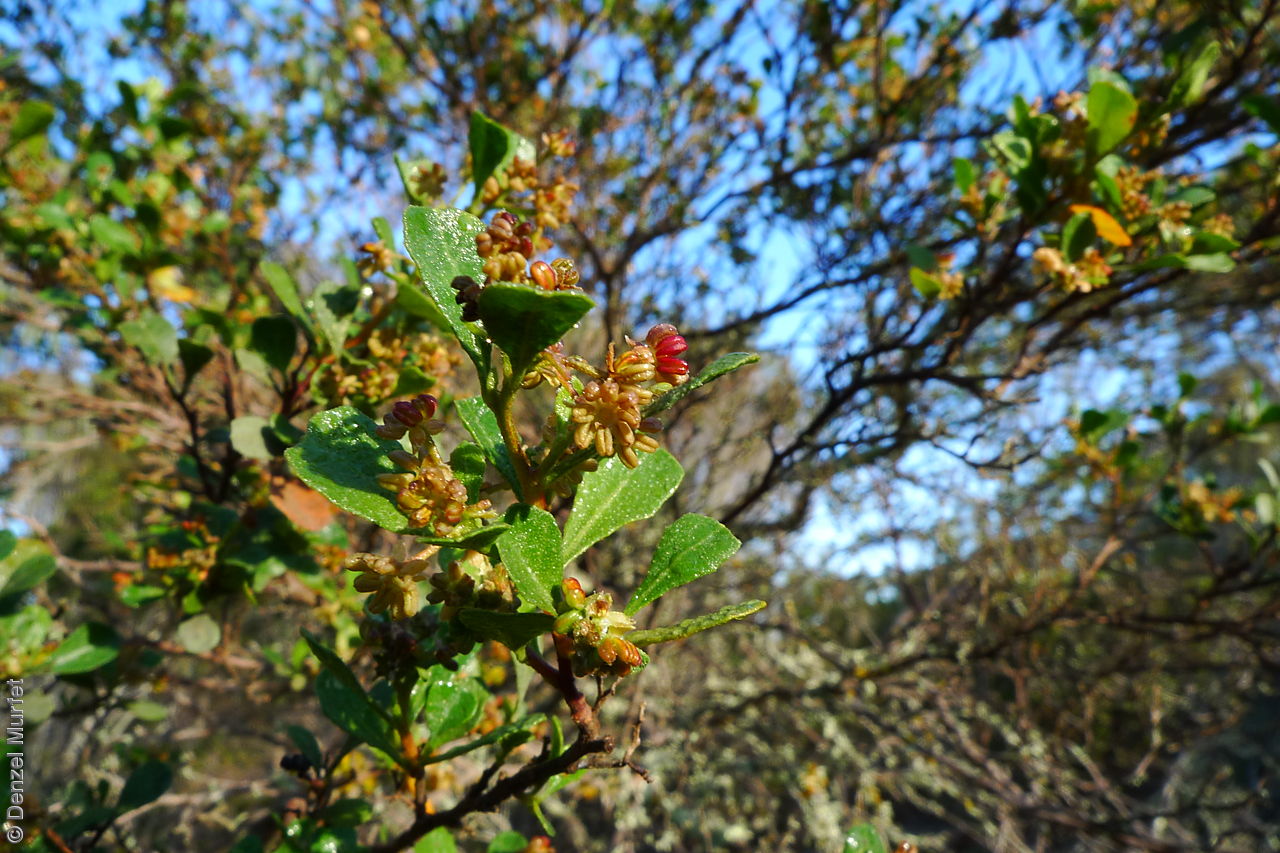
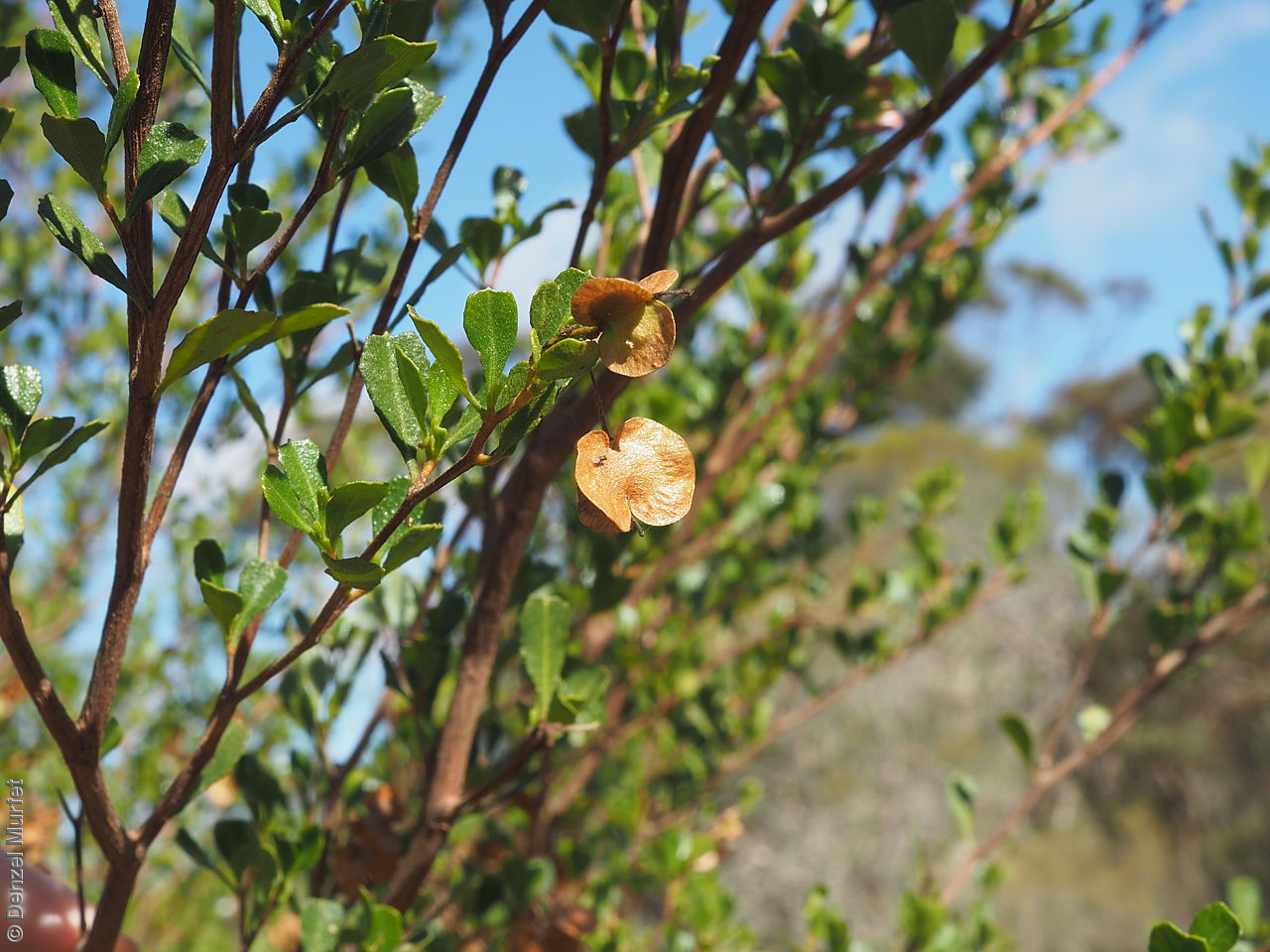
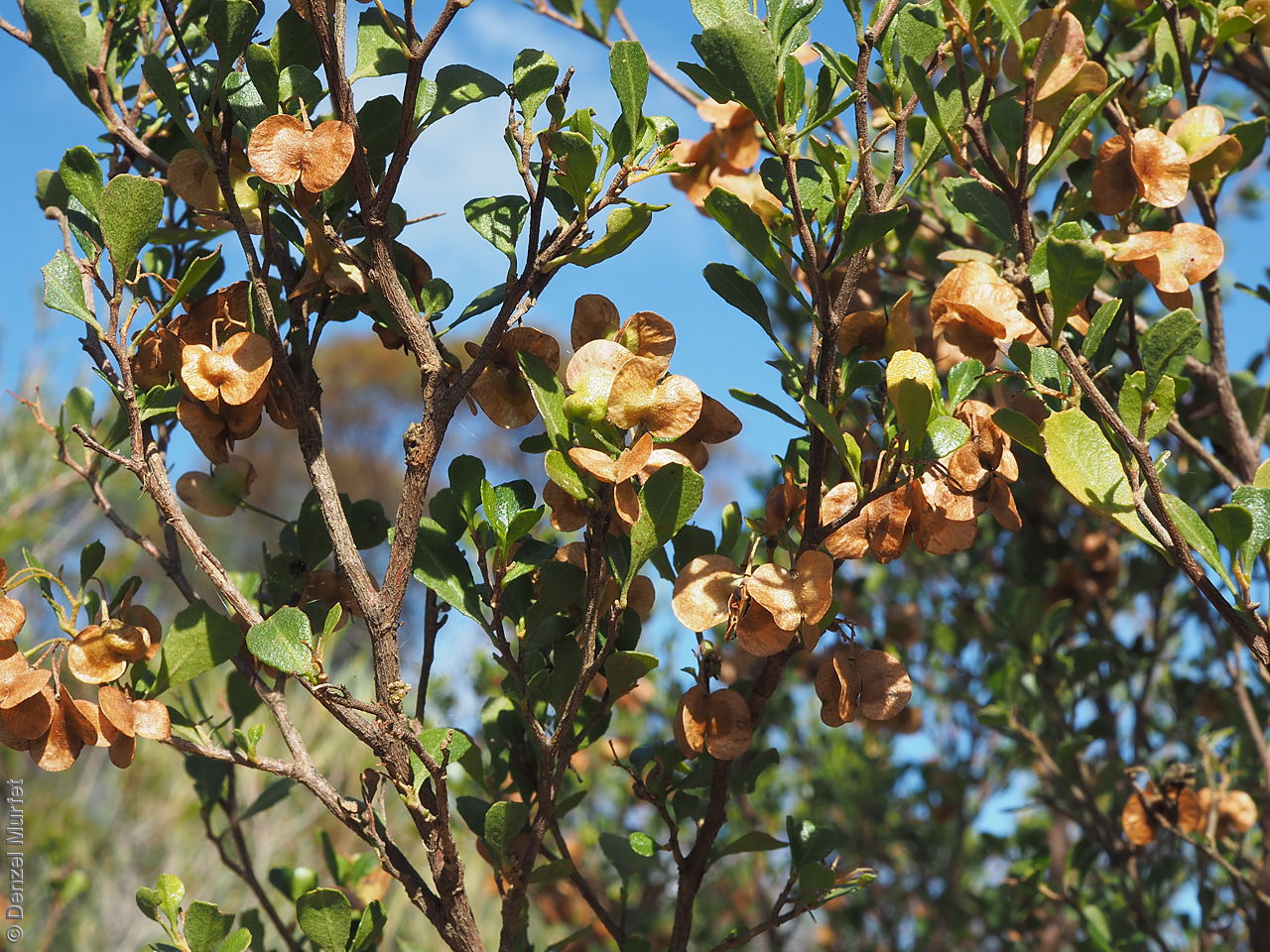
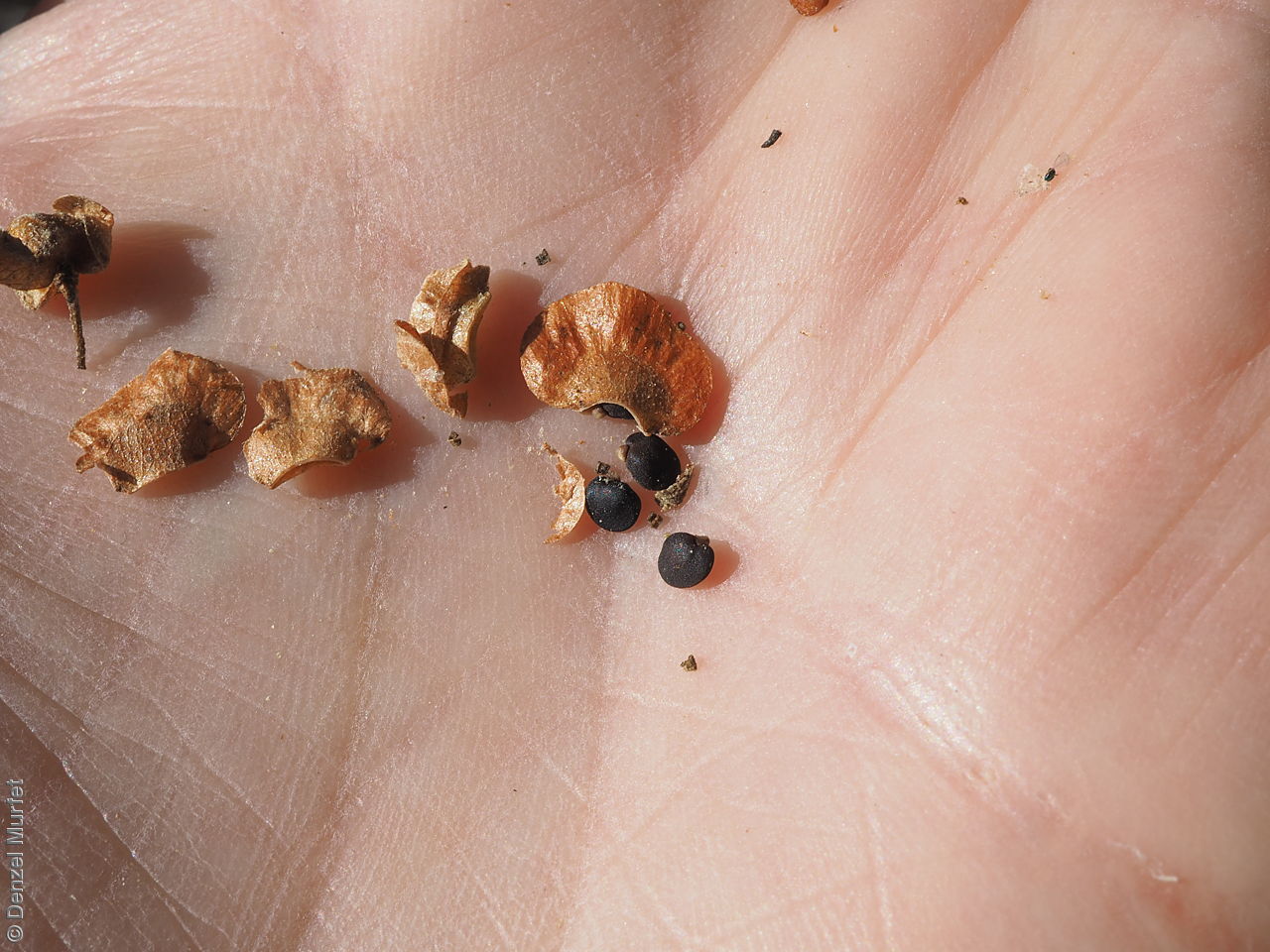
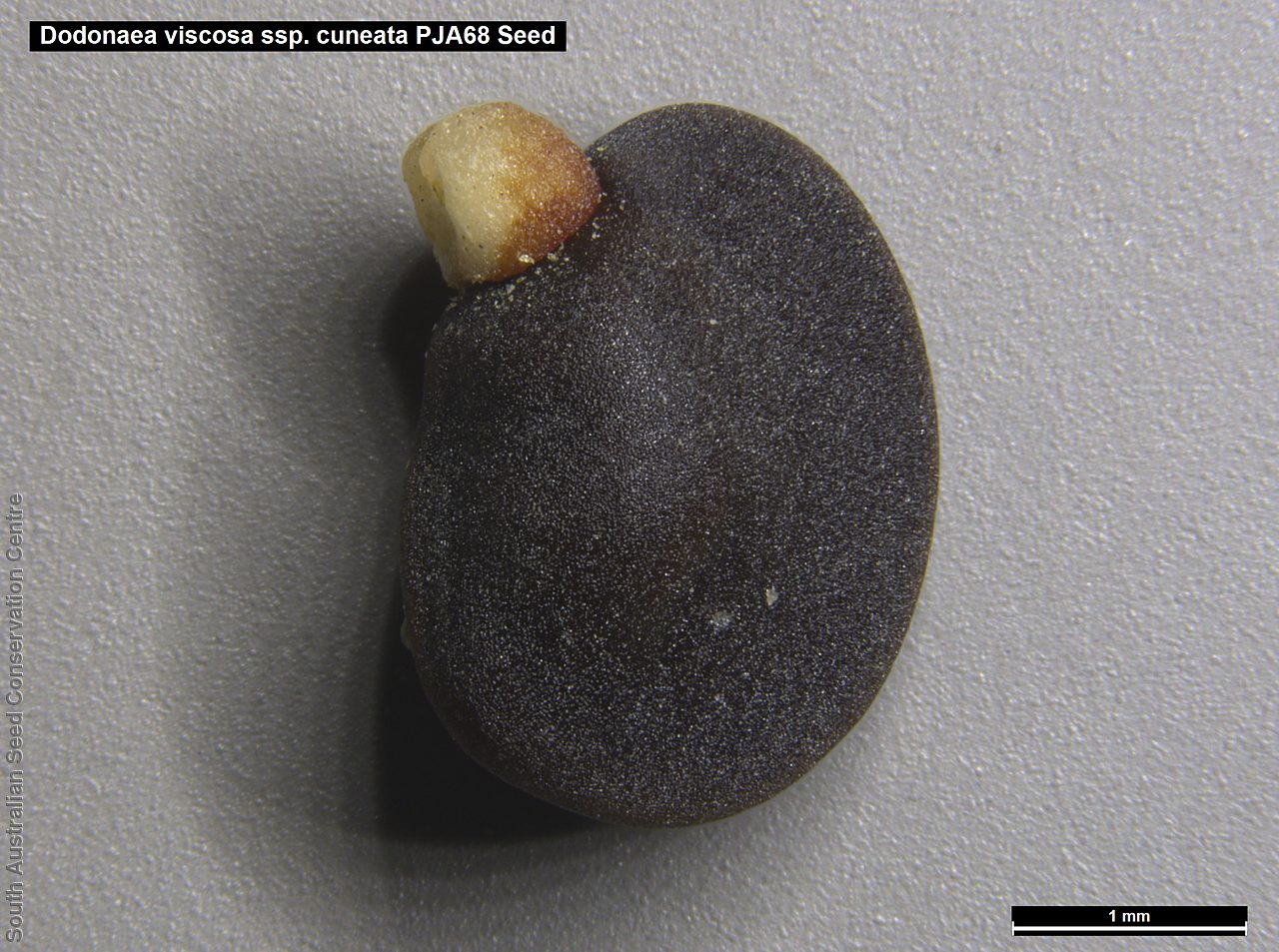
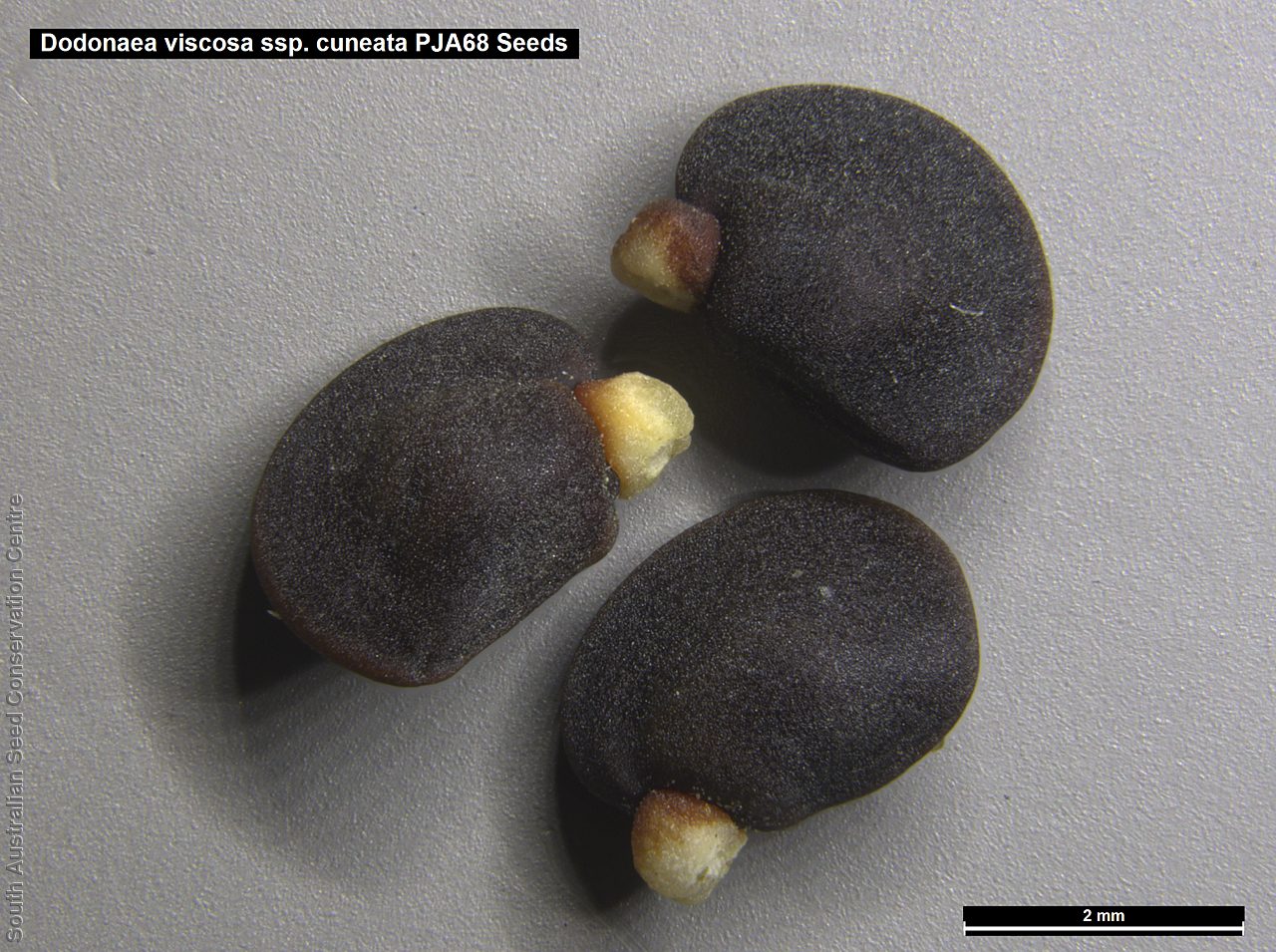

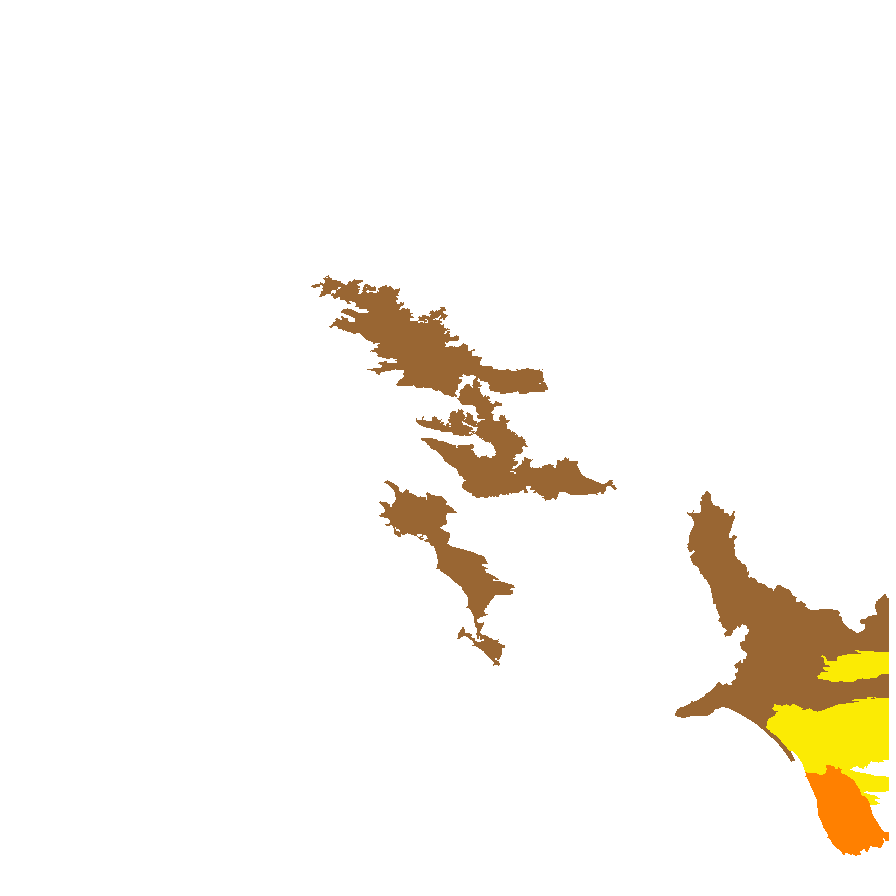
Botanical art
Prior names
Dodonaea cuneata var. coriacea
Dodonaea cuneata
Etymology
Dodonaea named after Rembert Dodoens (1517-1585), a Flemish physician and botanist, also known under his Latinized name Rembertus Dodonaeus. Viscosa from the Latin 'viscosus' meaning sticky, alluding to the leaves being viscous. Cuneata from the Latin 'cuneum' meaning wedge, referring to the wedge-shaped leaves.
Distribution and status
Found in the Mount Lofty Ranges and the Murray region of South Australia growing in open woodland and mallee shrub communities. Also found in Queensland, New South Wales and Victoria. Native. Uncommon in South Australia. Uncommon in Queensland. Common in the other States.
Herbarium regions: Northern Lofty, Murray, Southern Lofty, South Eastern
NRM regions: Adelaide and Mount Lofty Ranges, South Australian Murray-Darling Basin, South East
AVH map: SA distribution map (external link)
Plant description
Compact spreading shrub, to 3 m high. Leaves cuneate to angular-obovate or narrow-obovate, truncate or obtuse; usually with a short abrupt point, sometimes irregularly 2-3-toothed at the apex; to 3 cm long and 1 cm wide, margin entire to irregularly sinuate, viscous. Flowers in terminal panicles with small yellow-green flowers; sepals 3 or 4; stamens usually 8. Generally this subspecies is readily distinguishable but many intermediates exist where two or more subspecies are sympatric. This subspecies differs from the other three subspecies found in South Australia by having wedge-shaped leaves. Flowering between September and January. Fruits are red-brown 3- or 4-winged capsule to 28 mm long and 28 mm wide; wings extending from the base to the apex of the capsule. Seeds are black globular seed to 3 mm long and 3 mm wide with a short, fat brown aril. Seed embryo type is folded.
Seed collection and propagation
Collect seeds between November and March. Collect winged capsules that contain hard black seeds, usually when capsule is turning red or brown with black seeds. Place capsules in a tray and leave to dry for 1 to 2 weeks. Then rub the capsules by hand to dislodge the seeds. Use a sieve to separate the unwanted material. Store the seeds with a desiccant such as dried silica beads or dry rice, in an air tight container in a cool and dry place. From two collections, the seed viability was average to high, ranging from 55% to 95%. This species has physiological dormancy that needs to be overcome for the seed to germinate (e.g. nicking the seed coat).
| Location | No. of seeds (weight grams) | Number of plants | Date collected | Collection number Collection location | Date stored | % Viability | Storage temperature |
|---|---|---|---|---|---|---|---|
| BGA MSB | 5,900 (26.9 g) 5,900 (26.9 g) | 31 | 17-Dec-2003 | PJA68 Southern Lofty | 1-Sep-2004 | 55% | +5°C, -18°C |
| BGA MSB | 7,800 (43.88 g) 7,800 (43.88 g) | 15+ | 24-Nov-2006 | TST103 Southern Lofty | 1-Aug-2007 | 95% | -18°C |
Number of plants: This is the number of plants from which the seeds were collected.
Collection location: The Herbarium of South Australia's region name.
% Viability: Percentage of filled healthy seeds determined by a cut test or x-ray.